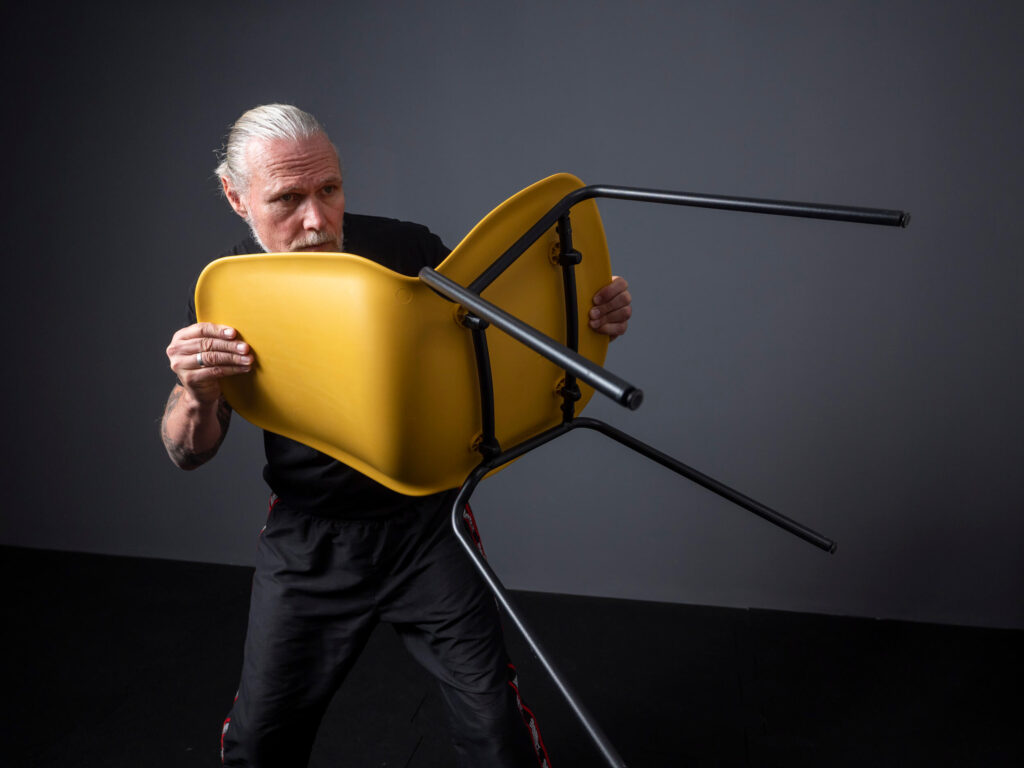SAMI-X DEFENSE
SDS Concept
SDS Concept
S.D.S.-Concept is a modern defense-based combat concept that is specifically designed for real-life self-defense. S.D.S.-Concept is one of the most sophisticated and pragmatic self defense concepts as it’s designed to provide you – the potential victim – with the most efficient methods possible to avoid, defuse, confront and neutralize both armed and unarmed assailants and to accomplish these methods in the safest manner possible.
There was a considerable need for effectively techniques which would allow both professionals and civilians, regardless of size, to effectively defend themselves and overcome physically strong attackers.

The System
All TCS principles are concepts for pure self-defense and self-protection. They do not have traditional martial art or combat sport background.
Contents of the S.D.S-Concept
The S.D.S.-Concept was developed as a complete and individual system. It is used as a defense-system against both armed and unarmed attackers as well as to execute clearing-, trapping-, transporting-, and nerve point pressure-techniques. It is a flexible and dynamic, yet simple system which is ideal for everyone. The techniques are quite easy to learn and can be used effectively in self-defense even after a very short period of training.
The S.D.S.-Concept contains weapon techniques, survival- and defense-strategies, conflict prevention, and also an understanding of self-defense psychology and the practical combination of pre-existing skills. It teaches awareness of targets on the body, the development of ideal movement angles and defensive reactions, footwork and mobility, various punching techniques, weapons’ use, improvised weapons’ use, pain-inducing controlling techniques and joint locks, knife fighting tactics, defense against attacks with a stick, protection of third parties, locking and controlling techniques, offensive strategies, direct one-on-one attacks, combination attacks, attack by baiting the opponent, attack with immobilization techniques, etc.
Self-defense tools
There are many tools and objects that can be used in self-defense. A set table, for example, is a veritable arsenal (keys, cutlery, chairs, etc.) Of course there are more obvious devices like stun guns, pepper spray, mobile alarms, gas pistols etc. None of those things can guarantee for protection, though, and should not give a false impression of security.
The correct use of a tool in self-defense is vital for effective protection. Only those who know how to use a device properly will be able to protect themselves without injury.
Reality-Based
The S.D.S.-Concept is a reality-based system. This means that real conflict scenarios are reproduced for training purposes, covering the range from a perceived threat to the actual attack and defense as well as strategy and analysis after the attack. Using appropriate concepts and solutions, the practitioner will be able to improvise in order to solve the problem at hand after a relatively short time. They will not follow a strict pattern or sequence, but will combine, using free-style, techniques and principles of the S.D.S.-Concept in an effective and goal-oriented manner.
Further criteria in the development of the S.D.S.-Concept
- Easy learning:
One of the key ingredients in developing the S.D.S.-Concept was to focus on easy application. Complicated defense techniques and long drills are useless, in particular for beginners, and cannot be applied under stress. Therefore the S.D.S.-Concept’s motto is: Keep it simple!
- Fast applicability:
One of the S.D.S.-Concept’s strongest assets is its immediate applicability.
- Self-defense as the user’s benefit:
Our education, courses and seminars are aimed at providing the user with a solid foundation for good reactions in dangerous situations. The techniques and strategies were developed to be used in cases of emergency, they can be learned fast, are realistically tested and are extremely effective. Only withstanding a self-defense situation unharmed is a real benefit for the user.
- De-escalating techniques:
De-escalating techniques are another important component of the S.D.S.-Concept as they can help to avoid aggressive confrontations. We have developed practical techniques and strategies.
- Defending third parties – assistance:
Within the S.D.S.-Concept students do not only learn to defend themselves but also to protect and help third parties. Correct techniques in handling the S.D.S. to protect third parties is therefore another realistic aspect in our courses.
- Transferred into other styles:
One of S.D.S.-Concept’s most important principles is the compatibility with and transferability to other martial arts. This means that tactics, strategy, risk assessment and training methods, not necessarily the technical content, are top priority. .
- Adaptation for certain professional groups:
Considering local laws and regulations as well as the adaptation of the S.D.S.-Concept to the needs of certain professional groups triggered the adaptation of the S.D.S.-Concept for certain professional groups.
- Unique instruction:
Scenario based training and anti-stress training are important parts of the instruction.
- Different instructions for users and instructors:
Basically, we follow two different lines of instruction, one for the user, the other one for the instructor. Instructors will be exposed to more intense training, will learn expanded skills, and will study teaching methods. Instructors should have a deeper understanding of techniques than the students in courses and seminars. Instructors should also be able to convey their strategic and tactical knowledge to their students.
The most important aim for the user is the applicability of newly learned techniques in real self-defense situations. The instructor, in turn, will learn how to teach these techniques in varied courses.

